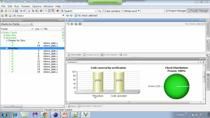Model-Based Design for DO-178C Software Development with MathWorks Tools, Part 7: Proving Code Correctness
In part 7 of this webinar series, we discuss the use of Polyspace for formal verification of the embedded software. Polyspace provides two capabilities within this workflow. The first is the inclusion of a MISRA AC AGC compliance checker which includes the capability to author custom coding rules. The second, and more important, is the application of formal methods to prove the absence of runtime errors in the software. Similar to the concept introduced earlier with Simulink Design Verifier for property proving, Polyspace uses formal methods to prove the absence of runtime errors.
Recorded: 31 Mar 2013




